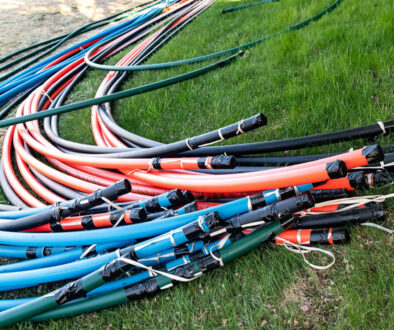Choosing the right cable conduit is a prerequisite if you want to achieve true reliability for your communication network. Properly specified conduit installs easier, prevents mechanical damage, and protects your cabling from environmental damage, all of which keep your network from unexpectedly going down in the future.
Future scalability is also a concern for many of today’s communication cable installations. Clients want to be able to upgrade and/or expand their networks as technology develops and their businesses grow. Choosing the optimum communication conduit now eliminates headaches in the future by streamlining the process of upgrades or expansion.
At Allwire, we understand that a reliable and high-performing fiber optic network begins long before the cable pull: it starts with the conduit system that houses the cables. In our 55+ years as a trusted conduit solutions provider, we’ve seen firsthand that the conduit is not simply a passive shell, but a critical component in safeguarding signal integrity, ensuring physical protection, enabling scalability, and enhancing installation success.
Protection Against Signal Interference and Environmental Damage
Throughout modern communication networks, fiber optic cabling has increasingly become the standard. Its inherent immunity to electromagnetic interference (EMI) is one big advantage compared to traditional copper systems. However, durable conduit remains vital for physical and environmental protection – no matter what type of cable you’re pulling.
- Preventing Physical Damage – Communication conduits protect against crushing, punctures, abrasion, and accidental excavation, all of which are especially critical factors in underground, industrial, or construction-prone zones. For example, when you’re building out a new fiber optic network in a growing residential area, or when you’re pulling cable via horizontal drilling.
- Environmental Protection and Weatherproofing – Weatherproof conduit materials like HDPE, used in Allwire’s cable-in-conduit (CIC) systems, deliver excellent resistance to moisture, extreme temperatures, UV exposure, and corrosive soil conditions. These are all crucial features for ensuring long-term network reliability after all of the cabling is laid.
- Preventing Interference – Various copper cables, twisted pair cabling, etc., are also used within / in conjunction with modern communications networks. For some of these applications that require specific protection against signal interference / EMI protection, a metal shielded conduit option may be required.
Operational Resilience and Network Scalability
Allwire’s reliable cable-in-conduit solutions add value beyond the initial installation. Backed by more than 55 years of experience in the industry, we know what conduit materials, layouts, and installation methods work best for your installation needs, scalability goals, and long-term durability requirements.
Our durable communication conduit solutions set your project up for ease of future maintenance and expansion. Fault identification, upgrades, or cable additions can be accomplished with minimal excavation or disruption when proper conduit infrastructure is in place.
Allwire: Innovation and Experience in Communication Conduit
At Allwire, our mission is to partner in your infrastructure’s success. Delivering optimized cable conduit solutions, we help clients set up reliable networks that not only perform today, but expand effortlessly in the future.




